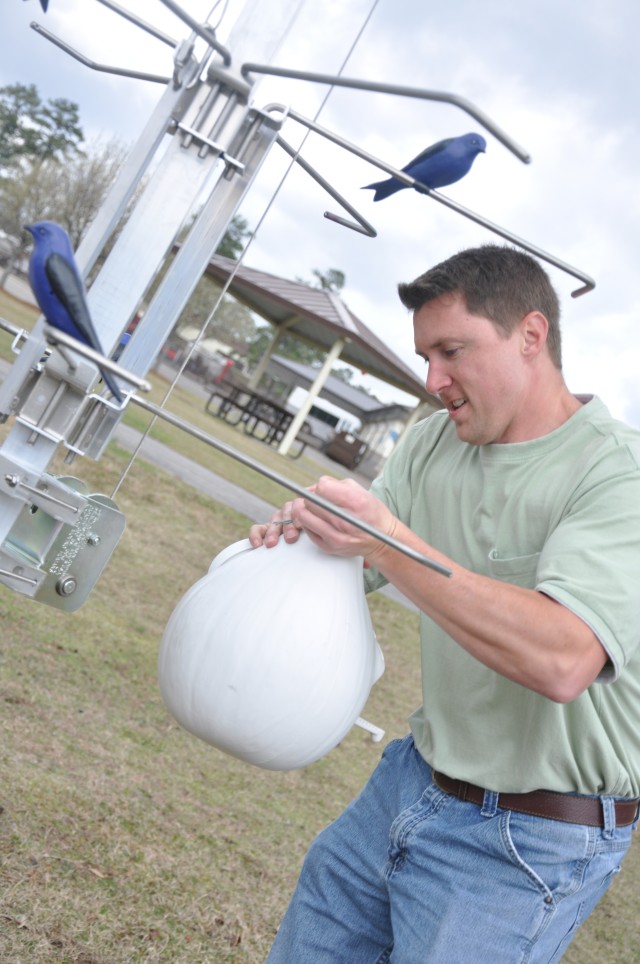FORT JACKSON, S.C. -- The Directorate of Public Works Wildlife Office and Family and Morale, Welfare and Recreation have high hopes that new housing on Semmes Lake will be occupied this spring by tenants from South America.
No, not family housing, but a newly erected pole with hanging gourds made for nesting birds, specifically Purple Martins.
Purple Martins are the largest member of the swallow family in North America, measuring 7 1/2 inches long and weighing 1.9 ounces. They spend the non-breeding season in Brazil then migrate to North America to nest. West of the Rockies and in the deserts they largely nest in their ancestral ways, in abandoned woodpecker nest cavities. East of the Rockies they are totally dependent on human-supplied housing.
"Martins have very specific needs and preferences when it comes to housing," said Josh Arrants, wildlife technician. "Martin housing needs to be placed in the center of an open area, in close proximity to human housing.
The spacing of trees and proximity to water is also a "selling" point for the birds, who are drawn to the new housing by bird replicas. But the housing looks nothing like the bird houses often depicted in the comics. Instead of a bird-sized version of a traditional home, the Purple Martin housing consists of five or six plastic gourds hanging from a tall metal pole.
"We selected commercially made gourds for our martin housing instead of other styles," Arrants explained. "Gourds of the correct size and type seem to be preferred by martins over aluminum or wooden housing units. Martins have been nesting in human-supplied gourds for hundreds of years. Before Europeans first arrived in North America, Native Americans were attracting these purple swallows to their villages using natural hollowed-out calabash gourds."
The birds are also good neighbors; as aerial insectivores - birds that eat flying insects - a flock will consume large numbers of insects daily, which is one reason people enjoy having a colony on or near their properties.
Another benefit to having a colony is the enjoyment of watching the birds' aerial acrobatics as they soar in the sky.
"I also find their song is quite interesting to hear," Arrants said. "If I had to describe it, I would say it sounds like laser beams with clicks and pops."
Biologists in the Wildlife Office, in consultation with FMWR, determined the best location on the installation for martin housing is the northwestern side of Semmes Lake.
"This site meets all the criteria for good martin nesting habitat," Arrants said. "We hope that that the martins will use the hanging gourds for nesting, and return each year enhancing the enjoyment of Soldiers and families that come to Semmes Lake for recreation."






Social Sharing